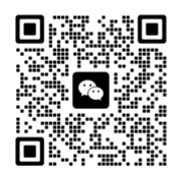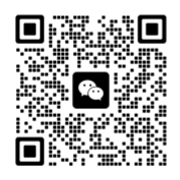As an important component of touch screens, border design not only affects the appearance and feel of the device, but also relates to the durability, functionality, and user experience of the device. This article will explore various options for PCAP touch screen border design, analyze the advantages and disadvantages of each design, and their applicability in different application scenarios.

Narrow border design has become a popular trend in the fields of smartphones and tablets in recent years. This design maximizes the display area by making the capacitive touch panel borders extremely narrow, providing a more immersive visual experience.
Advantages:
Larger display area: The narrow bezel design allows devices of the same size to have a larger industrial touch screen, enhancing the visual experience, especially when watching videos and playing games.
Beautiful and fashionable: The narrow border design looks more modern and fashionable, meeting the aesthetic needs of current consumers.
Portability: After the border narrows, the overall size of the device can be reduced, making it easier to carry.
Disadvantages:
Mistake touch problem: Narrow borders can easily cause users to accidentally touch the edge of the screen while holding the device, affecting operational accuracy.
Structural strength: Narrower borders may weaken the structural strength of the device, making it more susceptible to damage.
Manufacturing cost: Narrow borders require high manufacturing processes, which increases production costs.
Applicable scenarios
The narrow border design of ITO touch screen panel is very suitable for devices that require high display performance and portability, such as high-end smartphones, tablets, and gaming devices.
Compared to narrow borders, wide border design still has its unique advantages in some specific application scenarios.
Advantages:
Better grip: The wide border design provides more space for users to grip, enhancing the comfort and stability of the device.
Preventing accidental touches: A wider border can effectively reduce the occurrence of accidental touches, especially when performing precise operations.
Structural strength: The wide frame increases the overall structural strength of the device, making it more durable.
Disadvantages:
Limited display area: Wide borders will take up some screen space, making the display area relatively small.
The appearance is relatively bulky: the wide border design visually appears bulky and does not conform to modern aesthetic trends.
Applicable scenarios
The wide border design is more suitable for devices that require frequent grip and operation, such as e-book readers, certain industrial control devices, and outdoor smart terminals.
Borderless design is a design concept that pursues the ultimate screen to body ratio, attempting to completely remove screen borders and achieve a true "full screen" effect.
Advantages:
Ultimate visual experience: Borderless design provides an almost borderless visual experience, making users feel as if they are immersed in screen content.
High tech sense: This design is highly futuristic and technological, and can attract consumers' attention.
Maximizing display area: Borderless design can provide the maximum display area on devices of the same size.
Disadvantages:
Technical challenge: Borderless design places extremely high demands on screen technology, manufacturing processes, and structural design.
Fragile: Lack of border protection makes the screen more susceptible to damage.
High cost: Due to technical difficulties and manufacturing process requirements, the cost of frameless design is usually high.
Applicable scenarios
Borderless design is suitable for devices that pursue ultimate visual effects and high-tech feel, such as flagship smartphones, high-end tablets, and display smart terminal devices.
Curved touch screen border design not only enhances the aesthetic appearance of the device but also enhances the user experience by designing the screen edges as curved surfaces.
Advantages:
Unique visual effect: The curved border design makes the device visually more layered and three-dimensional.
Better hand feel: The curved design is more ergonomic and enhances the grip of the device.
Edge function extension: Curved borders can be used to display additional information or provide specific features, such as edge touch.
Disadvantages:
Manufacturing cost: The manufacturing cost of curved borders is relatively high, and the process requirements are strict.
Vulnerability: Curved screens are more susceptible to scratches and damage.
Adaptation issue: Surface design may cause display issues for certain applications and content.
Applicable scenarios
The curved border design is suitable for devices that pursue unique appearance and high-end feel, such as high-end smartphones, wearable devices, and certain high-end smart terminals.

 Your message must be between 20-3,000 characters!
Your message must be between 20-3,000 characters! Please check your E-mail!
Please check your E-mail!  Your message must be between 20-3,000 characters!
Your message must be between 20-3,000 characters! Please check your E-mail!
Please check your E-mail! 

